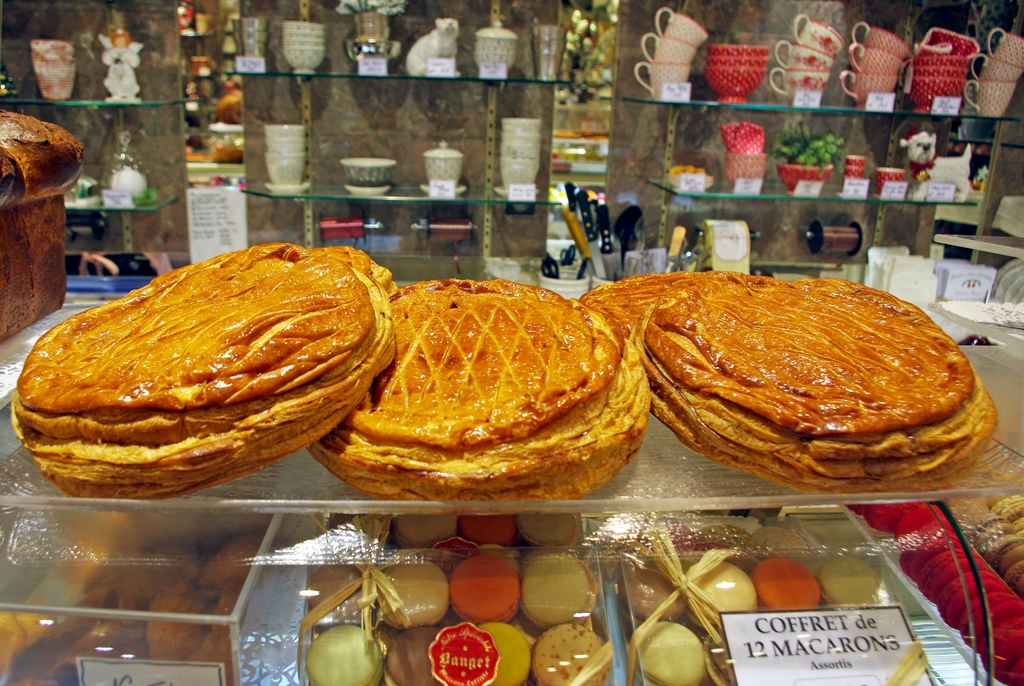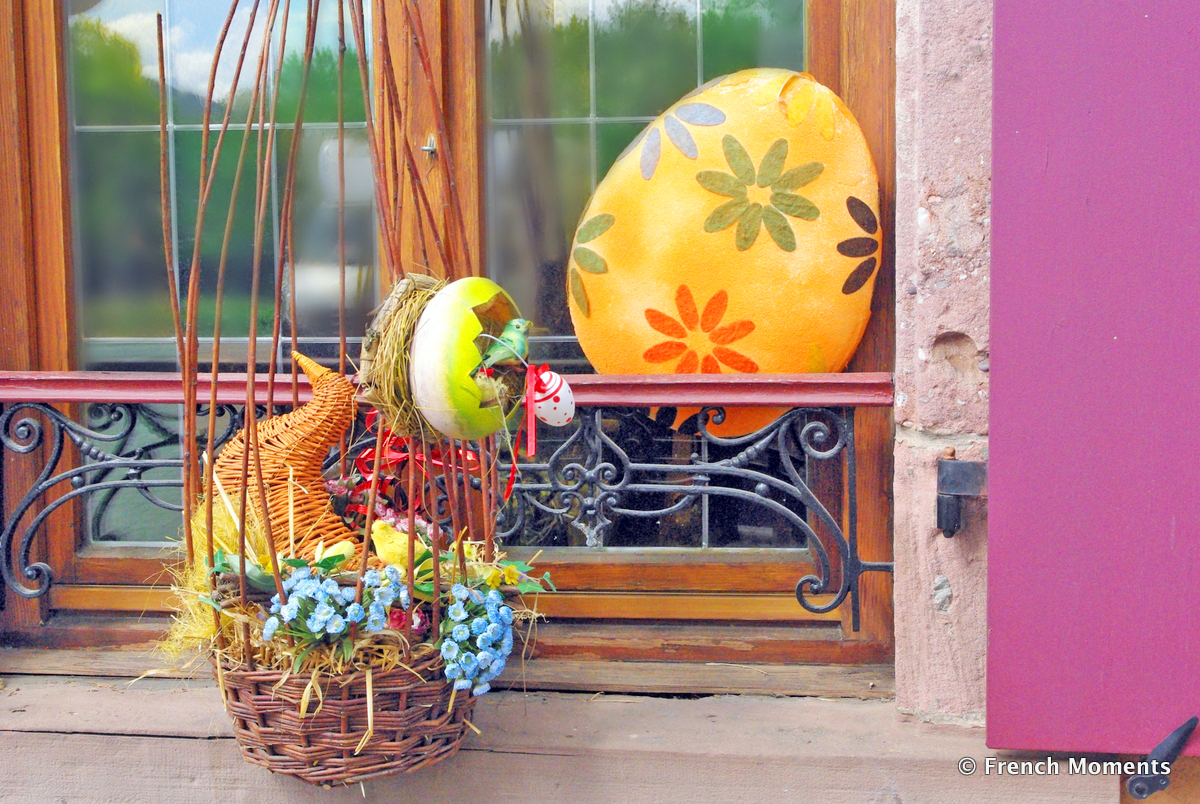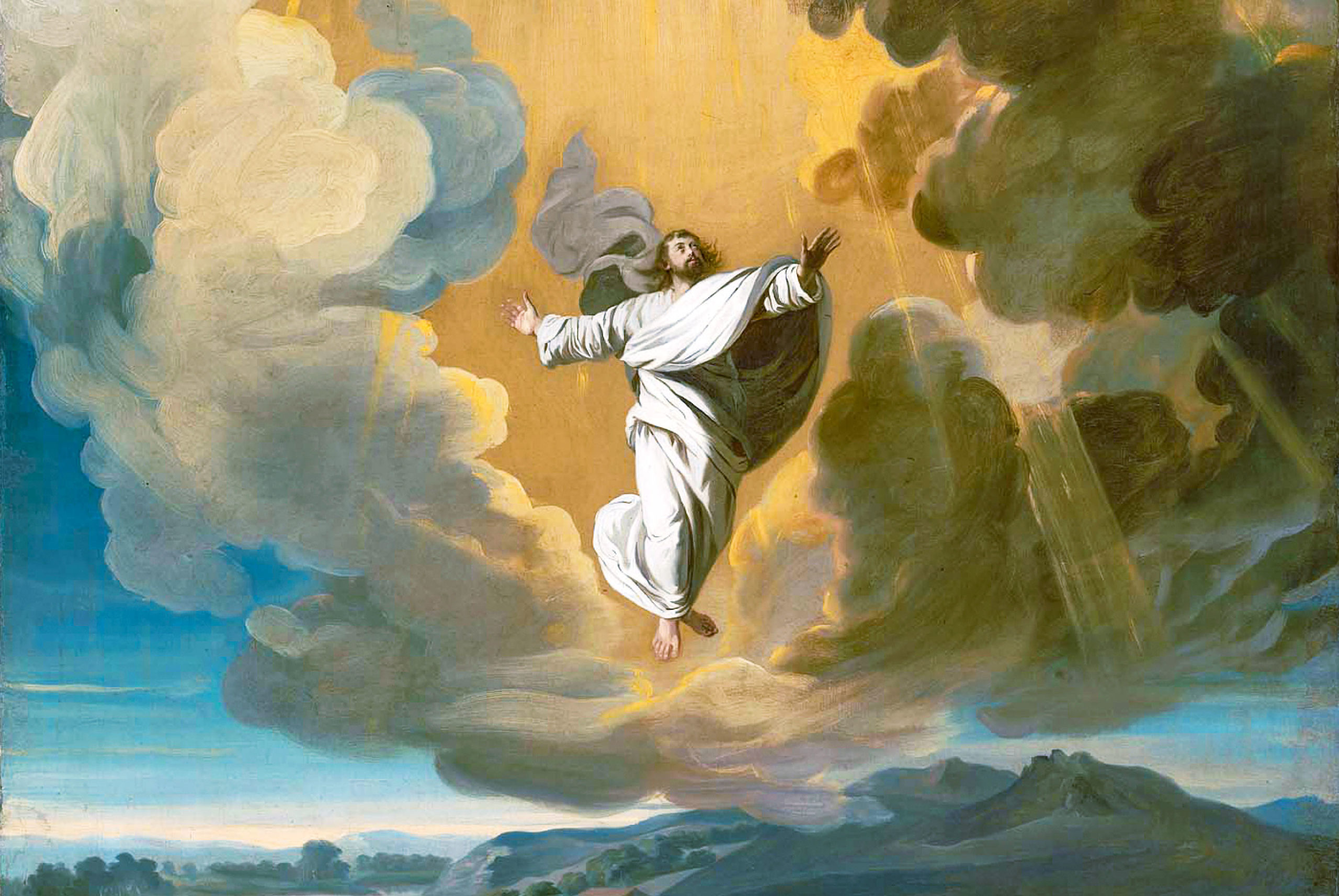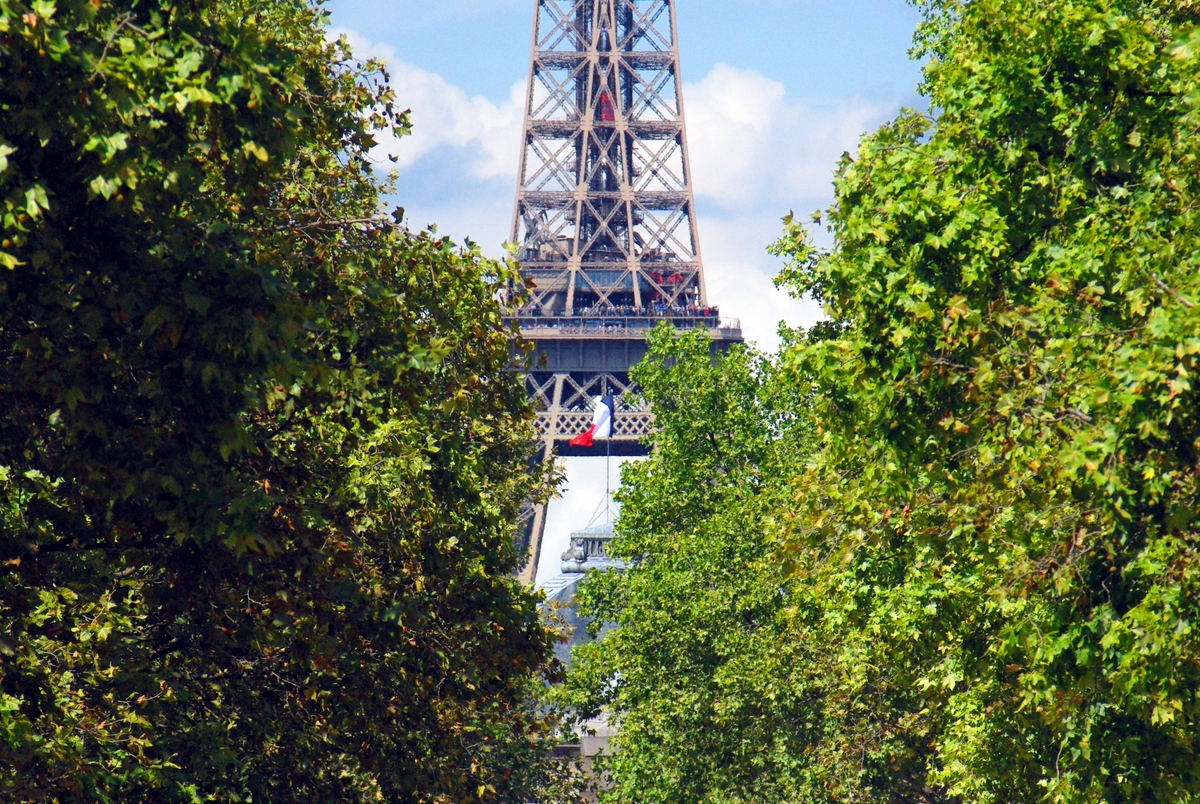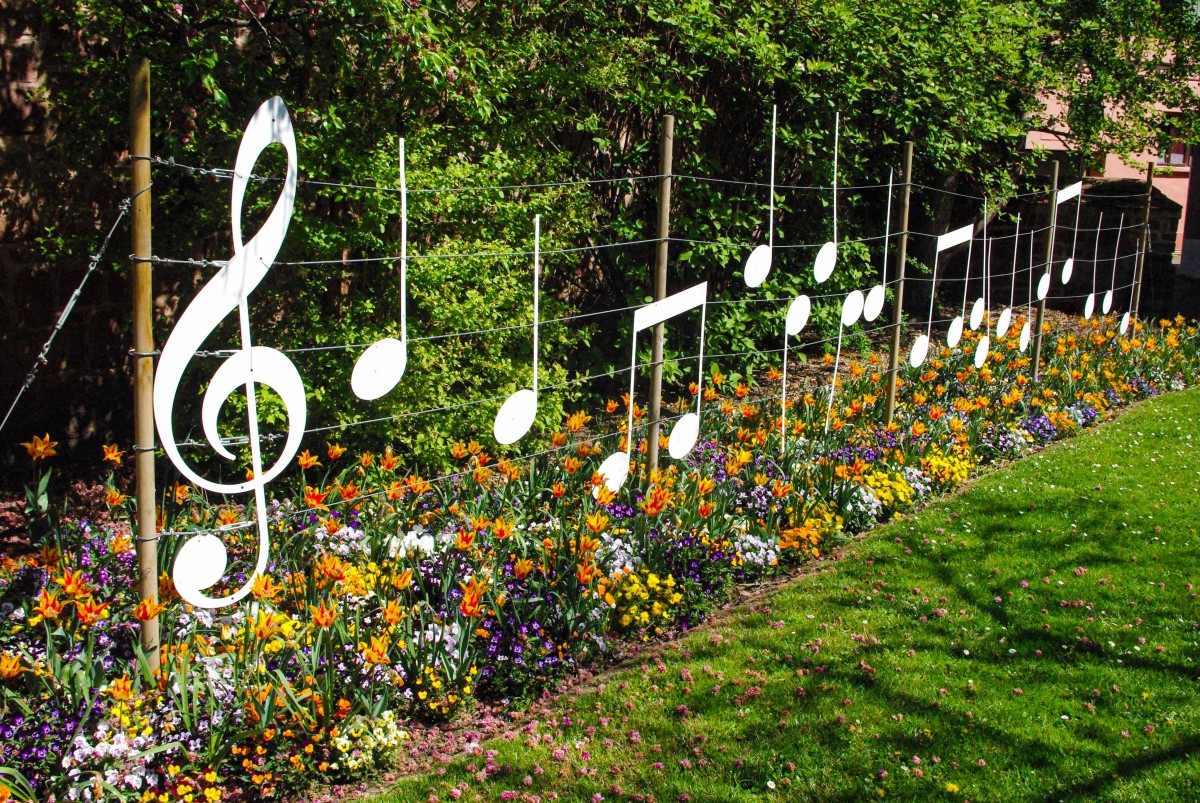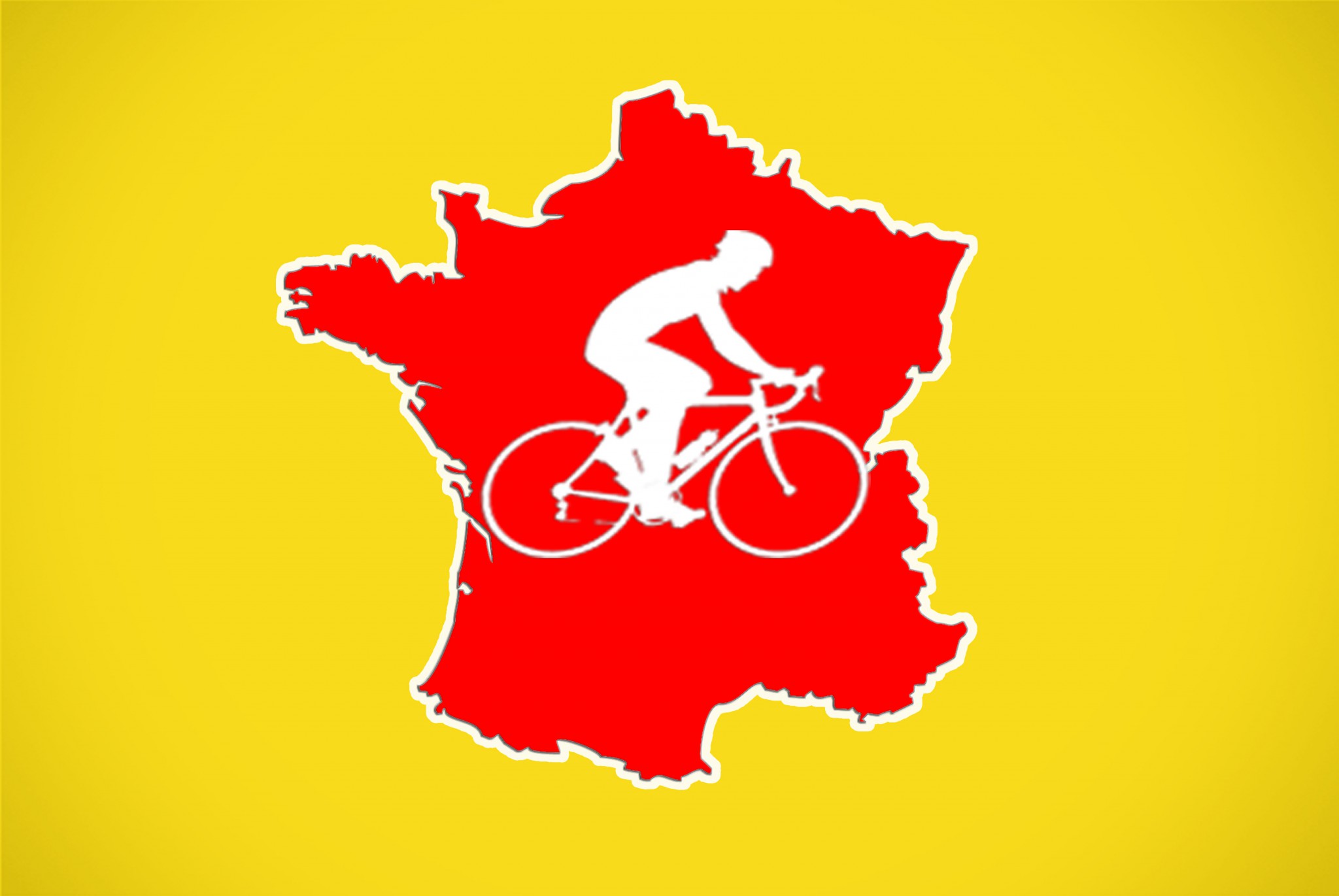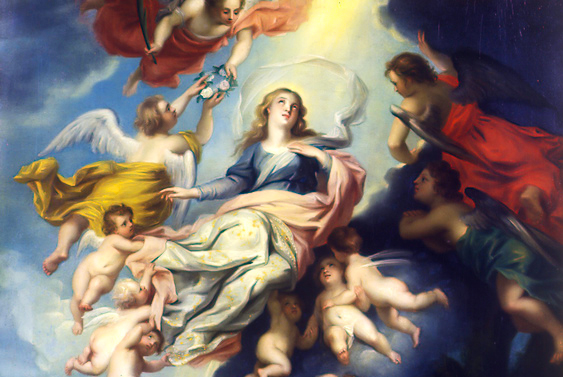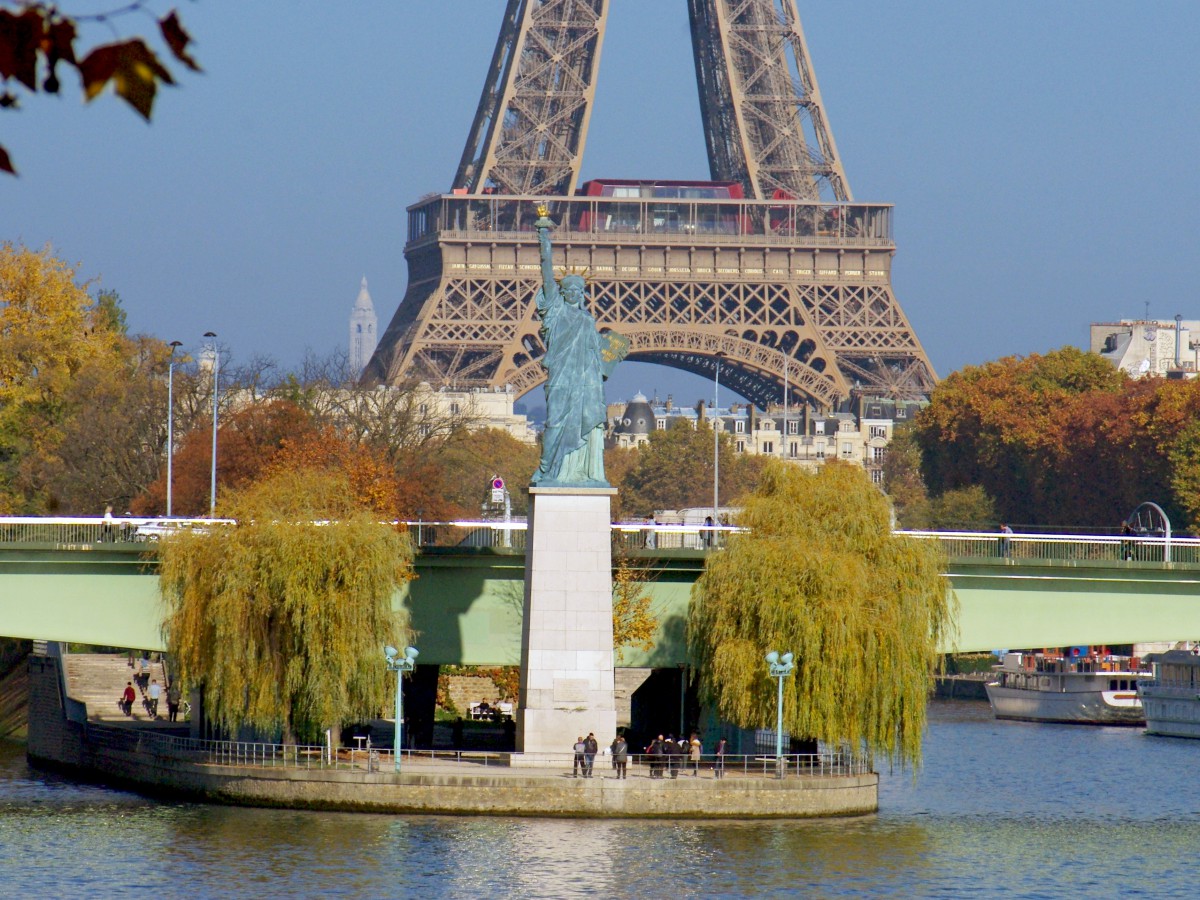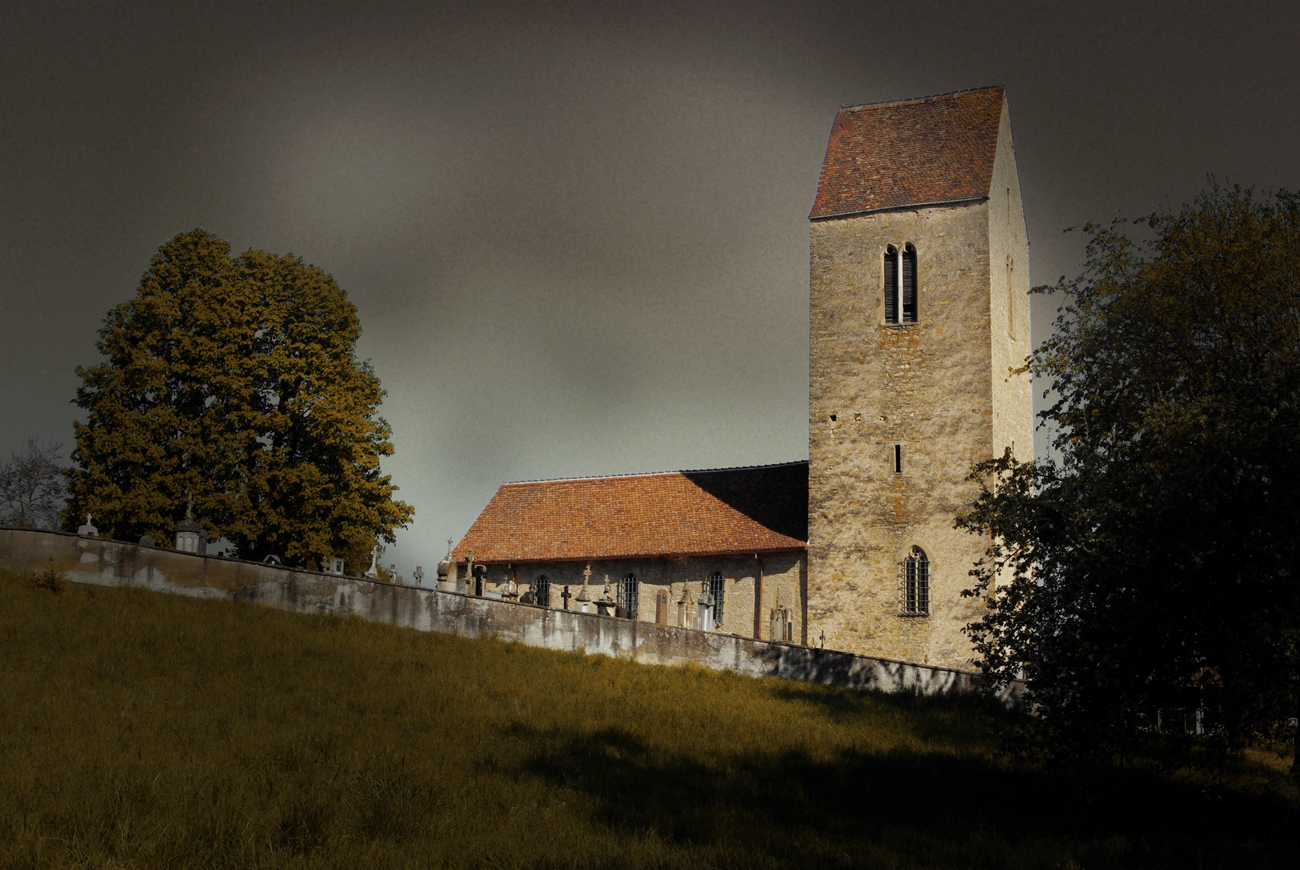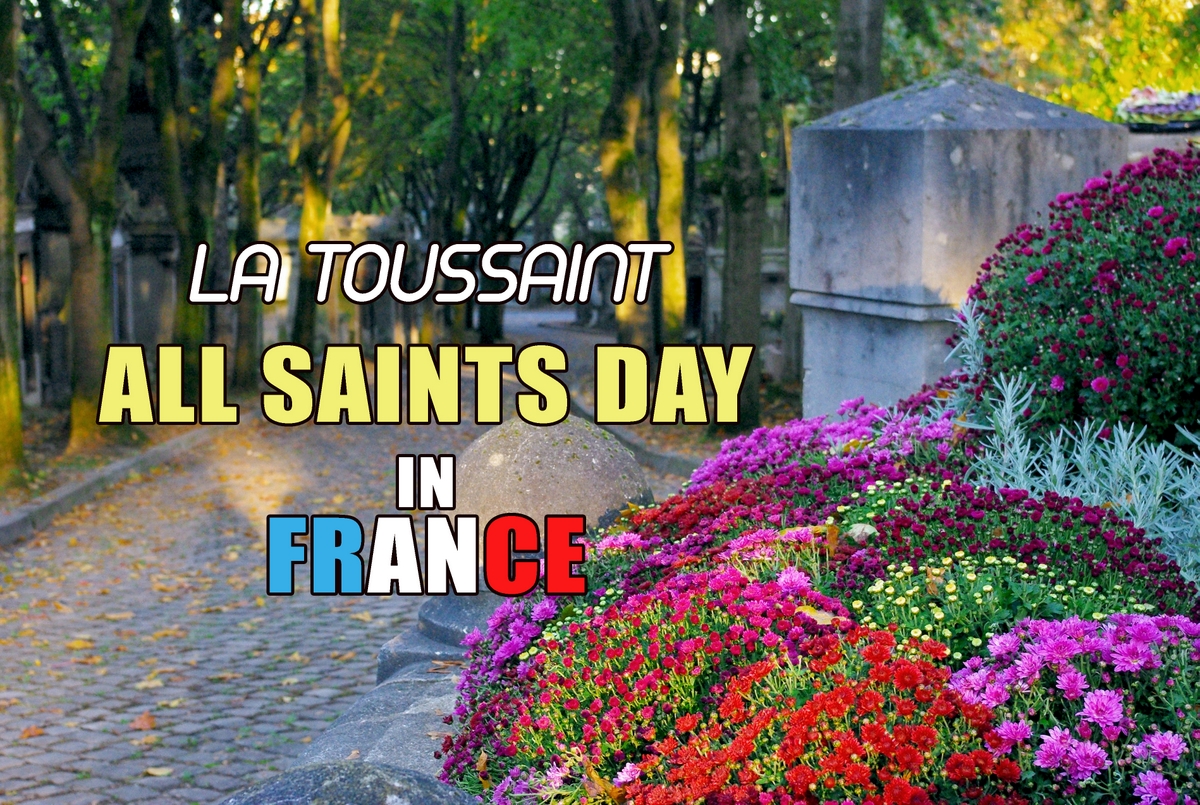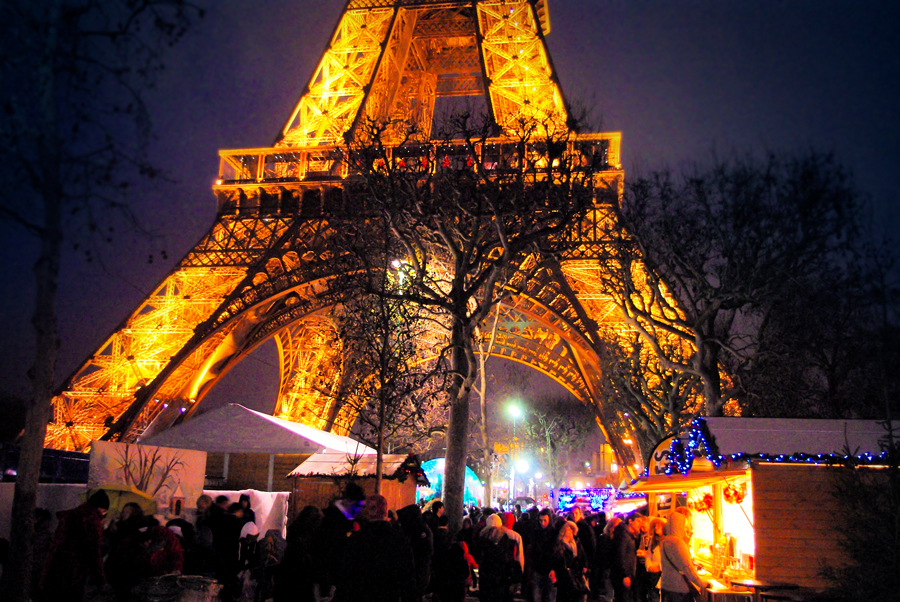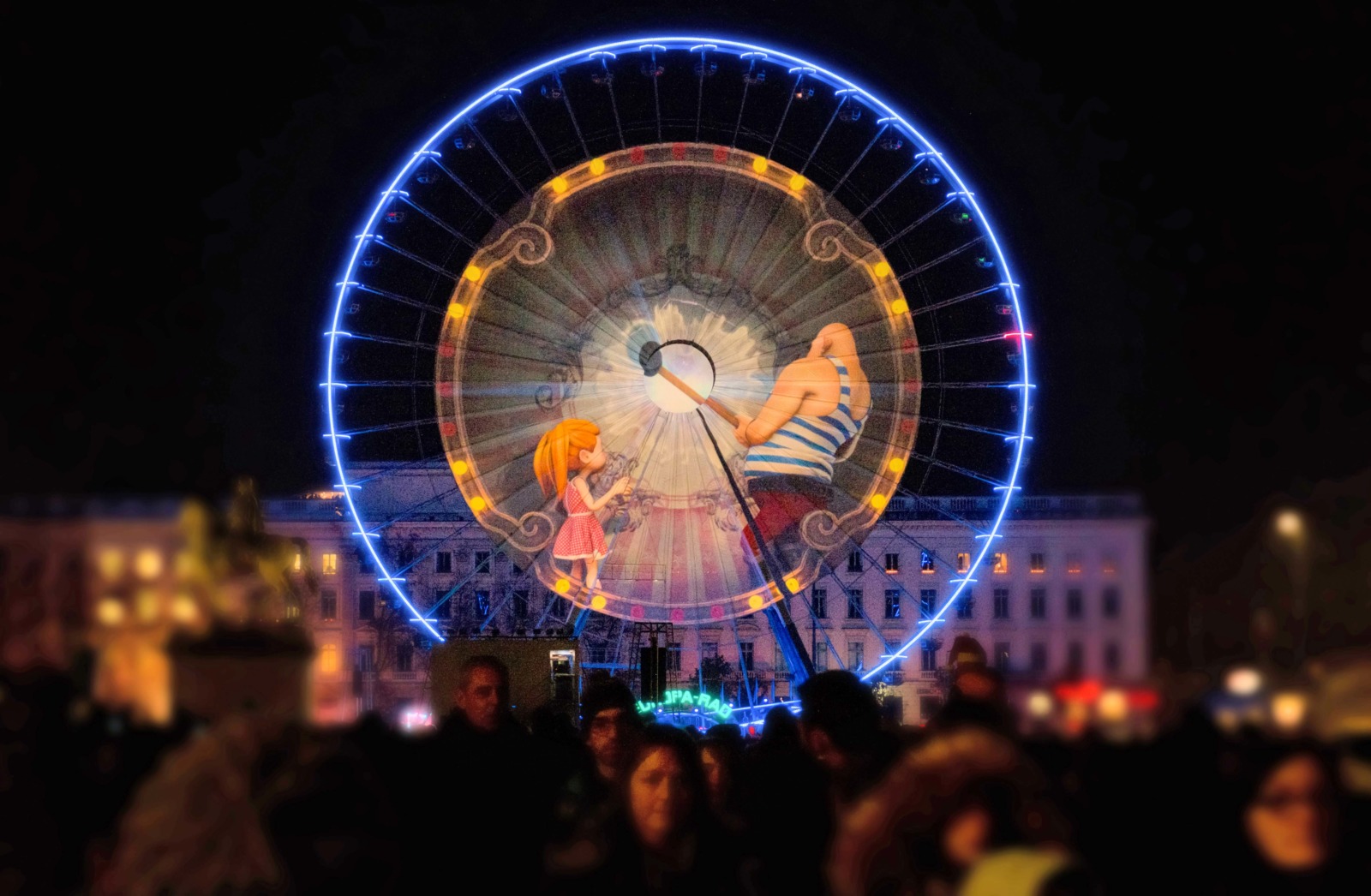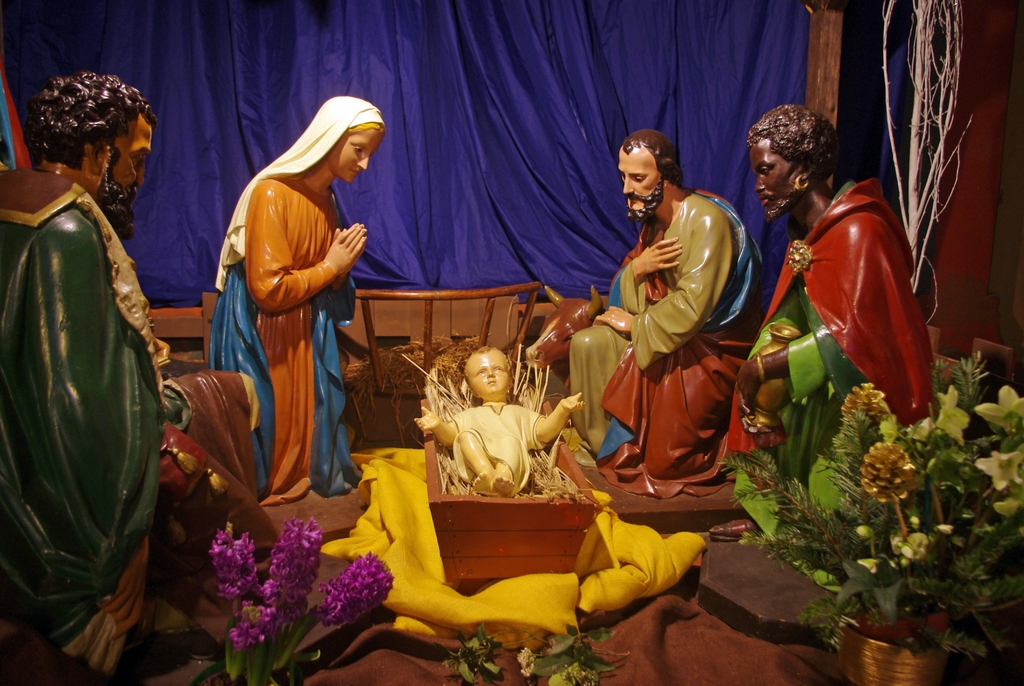The Assumption of the Virgin Mary is an essential date in the French calendar, heralding the end of the long summer holidays.
Although a secular country, France has kept the date of Assumption Day a public holiday.
Watch our short video on the origins and traditions of Assumption Day in France ⤵
The tradition of Assumption Day in France
Assumption (Assomption in French) derives from Latin assumption, meaning ‘a taking’.
The Catholic tradition
The date commemorates a belief shared by the Roman Catholic Church.
According to the Catholic tradition, the Virgin Mary, the mother of Jesus, entered directly into the glory of God (i.e. ascended into heaven) at the end of her earthly life.

This belief has no biblical basis but is in keeping with an ancient tradition of the Churches of the East and West and has been a liturgical feast since the 7th century.
The dogma defined by Pope Pius XII on the 1st of November 1950 teaches that “having completed the course of her earthly life, the Virgin was assumed body and soul into heavenly glory.“
What are the origins of the Marian cult in Christian dogma?
Marian worship, or devotion to the Virgin Mary is a significant component of Christian dogma that dates back to the Church’s earliest days. Here is an overview of the origins of the Marian cult in Christian doctrine:
Scripture and Tradition
The origins of the Marian cult are found in the Christian Scriptures, principally in the Gospels of Matthew and Luke and in the Acts of the Apostles.
The account of the Annunciation to Mary by the Archangel Gabriel (Luke 1:26-38) is one of the key moments that contributed to her being honoured as the mother of Jesus, the Saviour.
Councils and Doctrinal Development
Over the centuries, devotion to Mary developed and was formalised at ecumenical councils.
The Council of Ephesus, in 431 AD, declared Mary “Theotokos” (Mother of God), affirming her divine maternity regarding Jesus.
This title was fundamental in asserting both the human and divine nature of Jesus.
Development of Marian Dogmas
Marian beliefs continued to develop, leading to essential dogmas such as the Immaculate Conception (1854) proclaimed by Pope Pius IX, which states that Mary was born free from original sin, and the Assumption (1950) declared by Pope Pius XII, teaching that Mary was taken up body and soul into heaven after her death.
Influence of saints and writings
The writings of saints and theologians have also influenced devotion to Mary over the centuries.
Many saints have expressed their love and adoration for the Virgin Mary, which has strengthened popular devotion.
Popular worship and devotional practices
The worship of Mary also developed popularly by creating devotional practices such as the rosary, Marian processions and shrines dedicated to Mary.
These practices strengthened the spiritual connection between the faithful and the Virgin Mary.
Marian worship in Christian dogma is deeply rooted in faith in Jesus Christ and the recognition of Mary’s unique role as Mother of God.
These beliefs remain essential to the Christian faith for many believers worldwide.
What are the phases involved in establishing the veneration of Mary within the Church?
The incorporation of the Assumption into Orthodox and Catholic dogma unfolded through various stages:
- In 431, the Council of Ephesus officially recognized Mary as the Mother of God.
- In the 6th century, Byzantine Emperor Maurice expanded the celebration of the Marian feast on August 15th to encompass the entire Byzantine Church. This feast was known as the Dormition of the Mother of God and was already widely observed in the East.
- The year 813 marked the decree that the Dormition feast be observed as a mandatory celebration across Charlemagne’s empire, influenced by Pope Theodore’s guidance at the Council of Mainz.
- In France, King Louis XIII, seeking an heir, urged all parishes in the kingdom to hold a procession on August 15th to fulfil his wish. The Marian feast gained special significance following the birth of the future Louis XIV in 1638.
- Between 1854 and 1950, there were debates within the Church regarding the Immaculate Conception, asserting that Mary was conceived without original sin. Pope Pius XII’s pronouncement in 1950 meticulously defined the Assumption, solidifying it as an established dogma.
- The Second Vatican Council in 1964 established and enriched Mary’s adoration. Mary’s role was then recognized as both a maternal figure and a daughter of the Church.
Throughout these transformative phases, the veneration of Mary underwent evolution, leading to her esteemed position as an integral figure in the spiritual tapestry of Orthodox and Catholic traditions.
Why do Protestants reject Marian worship?
Protestants generally reject Marian worship due to their theological interpretations and doctrinal differences with Catholic and Orthodox traditions.
Here are a few key points that explain why many Protestants reject Marian worship:
Sufficiency of Christ
Protestants insist on the sufficiency of Jesus Christ as the sole mediator between God and humanity.
They believe that excessive veneration of Mary risks distracting attention from the centrality of Christ in salvation.
Sola Scriptura
The Protestant principle of “Sola Scriptura” (Scripture alone) emphasises that religious authority is based exclusively on Sacred Scripture.
Since Scripture does not explicitly support Marian worship, many Protestants believe it should not be practised.
Intercession and mediation
Catholics often believe that Mary and the saints can intercede on behalf of believers.
Protestants, on the other hand, maintain that Jesus is the only mediator between God and man and that seeking the intercession of other spiritual figures is unnecessary.
Risks of idolatry
Protestants fear that the veneration of Mary can sometimes slide into idolatry, where she becomes an object of worship in her own right rather than an inspirational figure of faith.
Reformation and reaction to abuses
At the time of the Protestant Reformation in the 16th century, there were abuses and excessive practices associated with the veneration of Mary.
The Reformers criticised these practices and sought to refocus their faith on biblical teachings.
Non-Biblical practices
Several elements of the worship of Mary, such as the Assumption and the Immaculate Conception, are not directly supported by Scripture according to Protestant interpretations, leading them to reject them.
It is important to note that opinions and beliefs may vary among different branches of Protestantism.
Some Protestant denominations may have a less rigid approach to Marian veneration, while others may reject it altogether.
According to the Protestants
Although respecting Mary as the earthly mother of Jesus Christ, the belief in Mary’s assumption has no Biblical basis for Protestants who do not teach nor believe in the dogma.
France: a nation consecrated to the Virgin Mary
On the 10th of February 1638, King Louis XIII vowed to consecrate himself, the royal family and France to Mary and chose Our Lady of the Assumption as their patroness.
He instituted the date of the 15th of August as a national day of processions in honour of Mary throughout the kingdom.
The first procession occurred at Notre Dame de Paris on the 15th of August, 1638. Louis XIII vowed to reconstruct the high altar of Notre Dame.
The famous Ingres painting below depicts the consecration of Louis XIII to the Virgin:
![Vow of Louis XIII by Ingres in 1824 © Notabene - licence [CC BY-SA 3.0] from Wikimedia Commons](https://frenchmoments.eu/wp-content/uploads/2014/05/Vow-of-Louis-XIII-by-Ingres-in-1824-©-Notabene-licence-CC-BY-SA-3.0-from-Wikimedia-Commons.jpg)
The celebration of Assumption Day in France
Despite a dramatic decline in church attendance in cities and rural areas, Catholicism is still deeply ingrained in French culture.
This may partly explain why the French have made August 15th a national day since Louis XIII’s vow in 1638.
The day is an essential celebration for many Catholic Christians attending church services.
In France, the Assumption of Mary patronises many cathedrals and churches.
On the 15th of August, administrations, businesses and shops are generally closed.
Catholics attend church, and most French people have family meals and organise afternoon outings.
![Assumption Day - Lourdes Pilgrimage © Celeda - licence [CC BY-SA 4.0] from Wikimedia Commons](https://frenchmoments.eu/wp-content/uploads/2014/05/Lourdes-Pilgrimage-©-Celeda-licence-CC-BY-SA-4.0-from-Wikimedia-Commons.jpg)
Assumption Day is the occasion for various events in small towns and rural areas: parades, markets, sporting events or communal meals.
The pilgrimage town of Lourdes in the Pyrenees welcomes thousands of visitors on the 15th of August who come to attend one of the many special celebrations.
In Paris, the Catholic community holds a procession on the River Seine on the 14th of August around the île of Saint-Louis and île de la Cité.
In Le Puy-en-Velay, a famous procession of international dimensions takes place in honour of Mary.
The sea resort of Arcachon on the Atlantic Coast celebrates Assumption Day with grand fireworks.
At Quimper in Brittany, the day dedicated to the Virgin is also known as the ‘Feast of the Soul’ accompanied by the sound of bagpipes and the light of bonfires.
Churches of the Assumption in France
France has many Catholic churches named Our Lady of the Assumption.
Here are some examples.
Eglise Notre-Dame de l’Assomption in Paris
![Notre-Dame de l'Assomption Paris © Guilhem - licence [CC BY 2.0] from Wikimedia Commons](https://frenchmoments.eu/wp-content/uploads/2014/05/Notre-Dame-de-lAssomption-Paris-©-Guilhem-licence-CC-BY-2.0-from-Wikimedia-Commons.jpg)
The church of Notre-Dame-de-l’Assomption is a Polish Catholic place of worship.
The sanctuary stands on Place Maurice-Barrès, at the corner of Rue Saint-Honoré and Rue Cambon in the 1st arrondissement of Paris.
Built between 1670 and 1676, the church was disused during the Revolution and reopened for worship in 1802.
Mgr Affre gave it to the Polish Mission in 1844.
Cathédrale de Notre-Dame-de-l’Assomption in Clermont-Ferrand
![Cathedral of Clermont Ferrand © Fabien1309 - licence [CC BY-SA 4.0] from Wikimedia Commons](https://frenchmoments.eu/wp-content/uploads/2014/05/Cathedral-of-Clermont-Ferrand-©-Fabien1309-licence-CC-BY-SA-4.0-from-Wikimedia-Commons.jpg)
The Cathedral of Notre-Dame-de-l’Assomption is a Gothic cathedral in Clermont-Ferrand, the historic capital of the Auvergne.
Work began in 1248 in the centre of the city of Clermont. It is the first example of the use of Volvic stone in architecture.
In the second half of the 19th century, the architect Eugène Viollet-le-Duc renovated, particularly the western façade.
Cathédrale Notre-Dame-de-l’Assomption in Montauban
![Cathedral of Montauban © Krzysztof Golik - licence [CC BY-SA 4.0] from Wikimedia Commons](https://frenchmoments.eu/wp-content/uploads/2014/05/Cathedral-of-Montauban-©-Krzysztof-Golik-licence-CC-BY-SA-4.0-from-Wikimedia-Commons.jpg)
The construction of the Notre-Dame-de-l’Assomption cathedral in Montauban (Occitanie) followed the revocation of the Edict of Nantes in 1685.
Louis XIV ordered its construction to mark the presence of royal power and Catholicism in a traditionally Protestant city.
The foundation stone of the new cathedral was laid on 10 April 1692, and the solemn consecration took place on 1 November 1739.
Eglise Notre-Dame de l’Assomption in Mont-devant-Sassey
![Notre-Dame de l'Assomption in Mont-devant-Sassey © Hocusfocus55 - licence [CC BY-SA 3.0] from Wikimedia Commons](https://frenchmoments.eu/wp-content/uploads/2014/05/Notre-Dame-de-lAssomption-in-Mont-devant-Sassey-©-Hocusfocus55-licence-CC-BY-SA-3.0-from-Wikimedia-Commons.jpg)
The church of Notre-Dame de l’Assomption in Mont-devant-Sassey (Lorraine) is situated in a magnificent natural setting on a wooded spur on the Meuse coast, in the foothills of the Argonne, a stone’s throw from the Ardennes.
The church is one of the most beautiful religious buildings in Lorraine.
Work on the abbey church of the Chanoinesses of Andenne began in 1127.
The church has three naves and is built in the Rheno-Mosan style (a mix of Rhenish and Meusian architecture).
Eglise Notre-Dame de l’Assomption in Eze
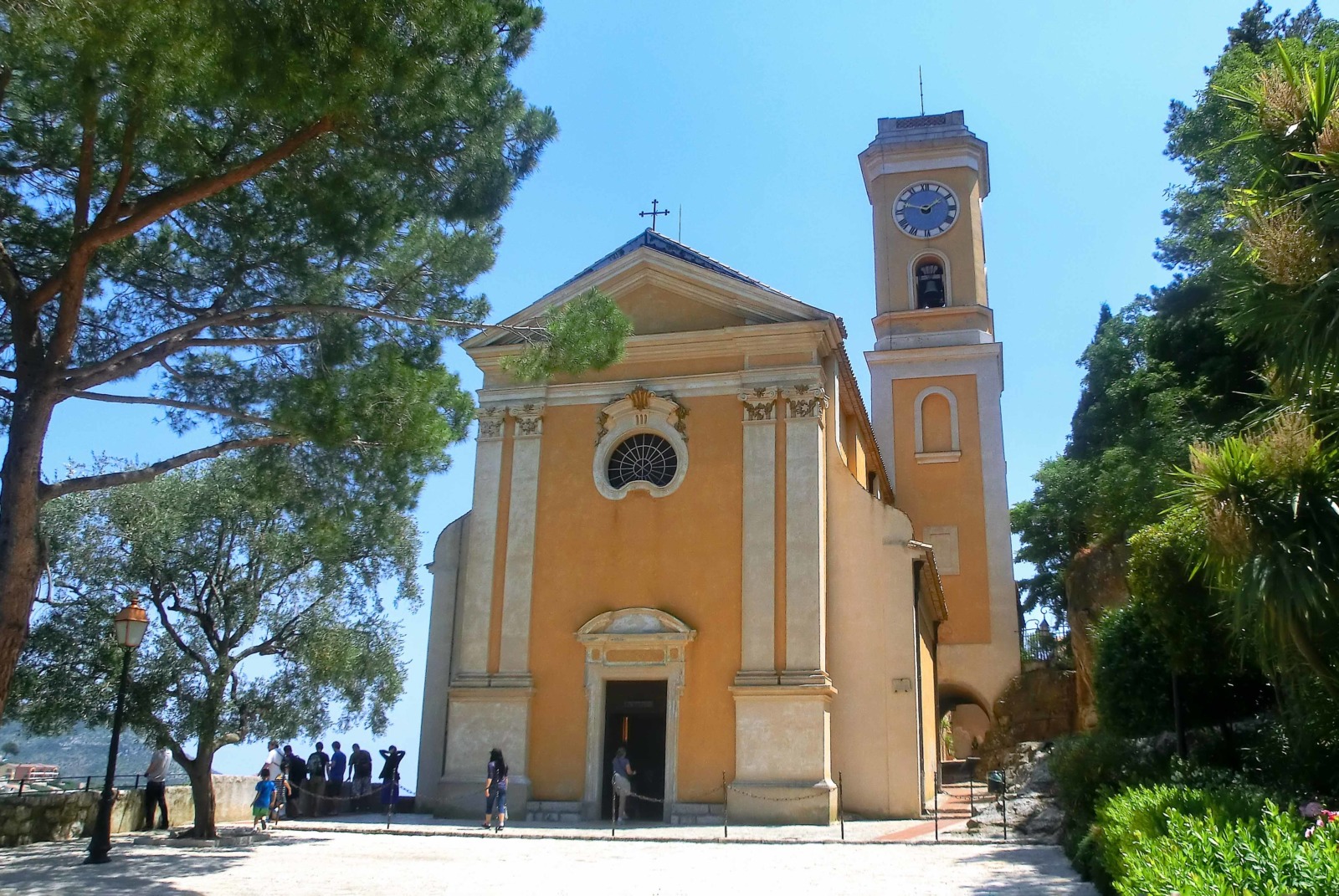
Notre-Dame de l’Assomption in Èze (French Riviera) is a neoclassical church of the 18th century (1764-1778).
The church was the work of the Italian architect Antoine Spinelli at the request of Duke Charles-Emmanuel III of Savoy.
Assumption Day: English-French Vocabulary
(f) for féminin, (m) for masculin, (adj) for adjective and (v) for verbs
- Assumption = Assomption (f)
- cathedral = cathédrale (f)
- Catholicism = catholicisme (m)
- celebration = célébration (f)
- church = église (f)
- dogma = dogme (m)
- Heaven = Cieux (m,p)
- Marian worship = culte marial (m)
- Mary = Marie (f)
- patroness = patrone (f)
- procession = procession (f)
- Pope = Pape (m)
- public holiday = jour férié (m)
- Roman Catholic Church = Église Catholique Romaine (f)
- religion = religion (f)
- summer = été (m)
- Virgin = Vierge (f)
More info about Assumption Day in France
- Discover the Holidays and Celebrations in France on the blog
- Find out more about Summer in France on the blog
- Find out more about Assumption Day on Wikipedia




